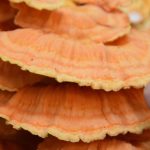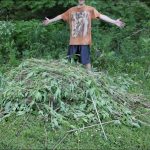The wild carrot is a biennial plant, meaning it takes two years to complete its life cycle. In the first year it will produce a rosette of leaves near the ground and in the second year it will produce a flowering stem that can reach up to four feet tall. The stem of the wild carrot is usually hairy and has a grooved texture. The root of the wild carrot is edible and very similar to the domestic carrot. It is usually white in color and has a strong carrot smell.
The wild carrot is a very common plant and can be found in many parts of the world. It grows in fields, meadows, and along roadsides. It’s important to be able to identify the wild carrot because it is very similar to other plants that are poisonous. It is also important to note that the leaves of the wild carrot are edible and can be used in salads or cooked like spinach.
In conclusion, the wild carrot, or Queen Anne’s lace, is a very common plant that can be found in many parts of the world. It is easily identified by its lace-like leaves, umbel shaped flowers, and grooved stem. The root of the wild carrot is edible and has a strong carrot smell. Knowing how to identify the wild carrot is important because it is very similar to other plants that are poisonous.



GIPHY App Key not set. Please check settings